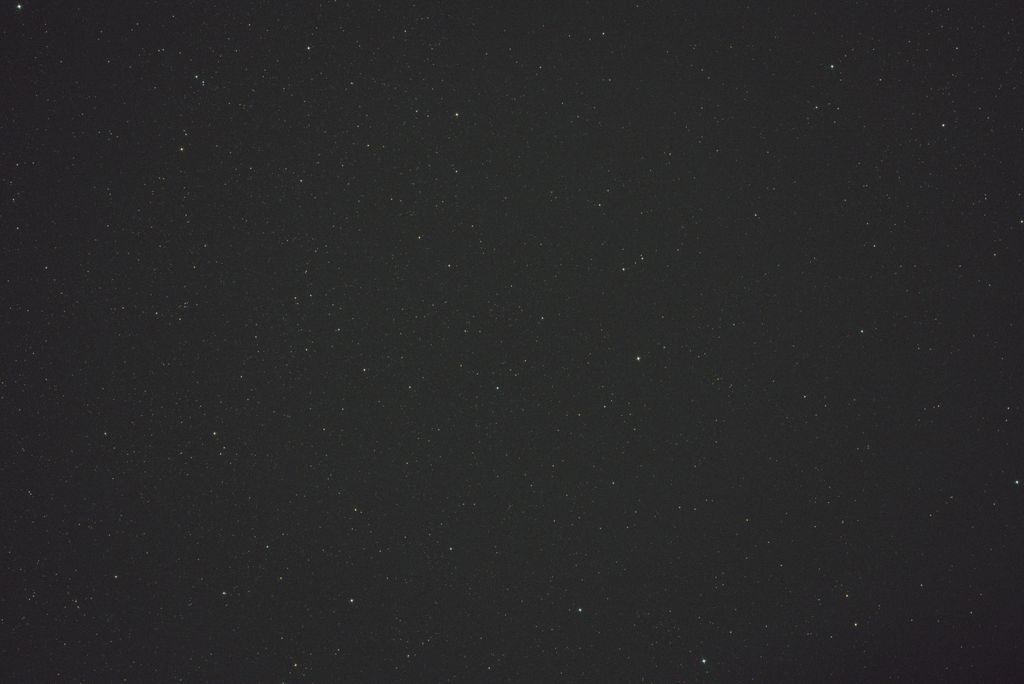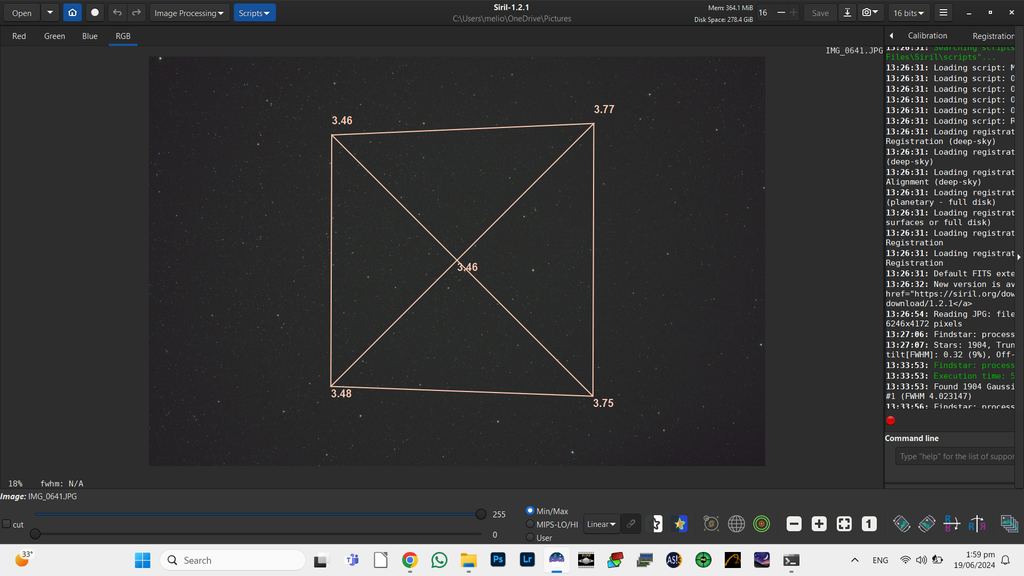

...
·
 |
|---|
The numbers at the four corners should be as close as possible. Ideally, a well corrected system will have all of them nearly identical (the 4 corners and the center).
|
...
·
 |
|---|
Means you have very little tilt. ASTAP will analyze it for you. Cheers!
|
...
·
 |
|---|
andrea tasselli: but my question is how do i know where to adjust, in or out? The bigger the number is the farther the sensor is from the telescope? |
...
·
 |
|---|
"the sensor out from the best focus plane" would be the right expression but yes, bigger number compared to the central values means a larger deviation from the aforementioned plane or larger amount of field aberrations. As I expect this to be a newton the residual aberration once coma is corrected is field astigmatism. The plot doesn't however tell you whether you need to tilt in or tilt out and which side is which (top/bottom). You can use ASTAP to do the adjustment on the fly so that you can see the effect of adjuting the tilt screws on the field correction. Assuming you got collimation nailed in…
|
...
·

·
1
like
|
|---|
andrea tasselli: I think that the bigger number just means it is more blurred at that position and, as Andrea says, that could mean that to correct it the right side has to be moved either in or out - by a very small amount. |
...
·
 |
|---|
The tilt adjustment plate on the 2600 MC Pro is horrid. And of course, there is an assumption here that it is the camera sensor plane that is the root cause of the tilt, while there can be other sources in the optical/mechanical train the OP is using that is causing tilt. Any how, this excellent thread goes over how to correct it, using NINA or ASTAP. The assumption here would be that the tilt is consistent and not caused due to some mechanical slop somewhere which depends on where the scope is pointed. https://www.astrobin.com/forum/c/astrophotography/equipment/fixing-the-dreaded-tilt-and-backspacing-error-in-optical-systems-with-objective-analysis/?page=1 |
...
·

·
1
like
|
|---|
How bad is it really? I agree with Monty that it looks pretty slight and fiddling with it may just make it worse….. Cheers, Scoty |
...
·

·
1
like
|
|---|
Scott Badger: This is the sanest answer in my view -- the distortion effect is probably too slight to worry about and at a level that RC BlurExterminator might fix anyway with no noticeable deleterious effect? |
...
·

·
1
like
|
|---|
It might not even be the camera. I battled a tilt issue on one scope only to narrow it down to the extension tube. On another scope, it was the rotator. On a third scope, it was astigmatism.
|
...
·

·
1
like
|
|---|
Sean Mc: Agreed. There is no evidence that it is coming from the camera though of course, it could be. Lots of people think that cameras with large sensors have tilt while in fact the large sensor is simply recording tilt in the system. |
...
·
 |
|---|
NINA's HocusFocus plugin has an abberation inspector which plots a 3D map of the apparent tilt, by varying the focus position. You can use this to very quickly determine which way you need to adjust tilt. I would also suggest throwing the stock ZWO tilt plate in the bin and getting the rear adjustable upgrade plate. The stock one is only adjustable by removing the camera to access the screws on the front. |
...
·
 |
|---|
People blame sensors, but they are the least likely source if tilt. Generally it's an adapter or accessory in your image train. I've measured several zwo tilt adapters with my micrometer and found variance in thickness up to 100 microns! Same with qhy spacers. You can buy a cheap micrometer and precision calipers to investigate, but as you get closer to the edge of a corrected field, tilt and backspace error compound with field curvature and 3.76 um pixels make it obvious. You can try to fix it, or use blurX.
|